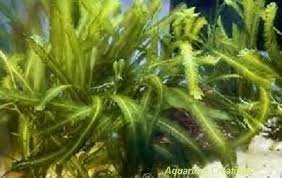Micro Algae are a group of diverse micro organisms existing in shallow water bodies. They can be cultivated in artificial tanks, shallow lagoons and ponds. These micro organisms comprise of photoautotropic protists and prokaryotic cyanobacteria also known commonly as blue green algae. We are talking about microscopic photosynthetic organisms which can be found in fresh water bodies and even in saline environments. By using carbon present in the air for energy, these micro algae produce compounds like proteins, carbohydrates and lipids. Studies state the possibilities of a great number of species but only a few thousands are recorded at the moment. The micro organisms live in complex habitats and can survive any adverse conditions which give them the ability to create secondary metabolites.
Apart from proteins and carbohydrates, these micro algae produce beneficial by products like B-carotene, astaxanthin, functional pigments and other algae extracts. Chlorella was the first commercially cultivated micro algae. Algae are further classified into several groups based on the type of pigments or the storage compounds. However, with the help of advanced molecular biology we are able to check the relation between taxonomic groups and other families of algae.
When we talk about micro algae habitat, it can either be fresh water or sea water. The green coloured micro algae can be found in both. There are several other species of micro algae which grow in extremely saline environments. Within these habitats, there are the surface dwellers and then the ones that populate just under the surface. Some of them even exist 200-300 metres below the surface of water. These micro organisms are often unicellular and small in size. But then one does not observe them as an individual entity rather a series of greenish or brownish patches on the water surface. The ideal climate for cultivation or for these organisms to thrive would be of a warmer nature preferably above 20 degrees. Many countries are exploring the possibilities for mass scale cultivation of these micro organisms. Israel, India and several other Mediterranean countries are simulating the environmental parameters to aid large scale production. Scientists are also looking into the possibilities of culturing micro algal strains for bio fuels.
Micro algae have several applications. It is used in the food industry. It is used for making pharmaceutical formulations. It is also used for waste water purification. Aside from these major uses, they have applications in the field of cosmetics, highly nutritional food and confectionaries. They are also used as a source for natural dyes.
For the past ten years, scientists have been focusing all their attention on two different micro algae for neutraseutical and biotechnological applications.
- Spirulina
- Chlorella
Spriulina:
Spirulina is a type of cyanobacteria that have been cultivated for the past thirty years. Several of its uses include vitamin supplements, fish food, food dyes, and pharmaceuticals. Due to its high demand, spirulina is being cultivated in raceway ponds and artificial tanks. It has grown to become a popular super food and carries a multitude of health benefits.
In order to cultivate high grade industrial standard microalgae, there are a lot of environmental parameters to be met. Most commonly, raceway ponds are employed to culture spirulina. The water depth in the pond is ideally between 300-500mm and it depends upon the physical and chemical properties of the microalgae. Density is also factored into consideration. The temperature of the water and the Ph value has a significant effect of the production of Spirulina. Best cultivation practices state a temperate between 35 and 37 degrees. Some of the other parameters that are considered are water flow velocity and the light absorption by the culture.
When we observe the composition of Spirulina, we see that it majorly consists of proteins, almost 60 to 70%. Spirulina also contains many amino acids. The richness and value of spirulina is no joke, it contain several B vitamins, more beta carotene than carrots, vitamin E, chlorophyll and many minerals. Spirulina has a long list of health benefits. Spirulina is used for weight management. Spirulina is used to maintain positive insulin levels thus controlling diabetes. Spirulina increases the HDL levels in the body which can lead to healthier cardiovascular functions. Spirulina also contains high value minerals like iron, calcium and magnesium.
Chlorella:
Chlorella is another unicellular, spherically shaped green microalga. In regard to spirulina, chlorella is less demanding of the environment, needing only co2, water and sunlight for its culturing. Chlorella is usually cultivated in photo bioreactors and harvested by the method of centrifugation. After the process of centrifugation, the bio mass by-product is spray dried and the commercially sold in powder form. Chlorella contains only 55% proteins, slightly lesser than that of spirulina. Rest of the composition include carbohydrates and lipids.
The health benefits of Chlorella include the ability to regulate the blood pressure, reduce the cholesterol levels in the body and enhance the immune system. Studies also claim, it could potentially relieve a person of hypertension and other conditions like nausea.
These are only two types of micro algae discussed here. There are several others. It is highly likely that more species of unidentified alga exists than identified ones. As the human population is constantly increasing, we turn towards nutritive biomass to meet the demand food and health products. The wide diversity and fast growth of micro algae makes them favourable for this task. The role of algae in human health will see a significant spike in the coming years.

